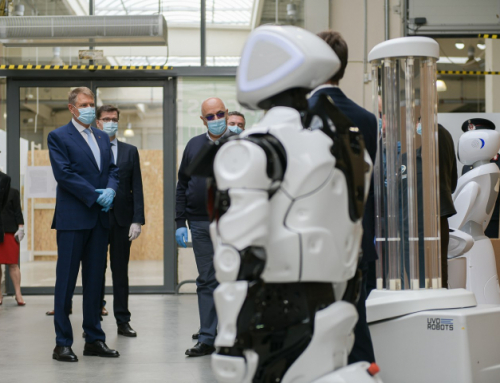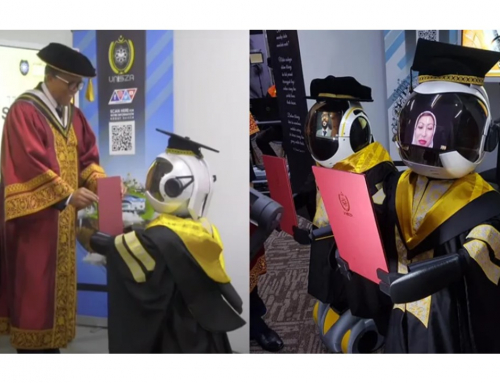
Universities work with stakeholders to co-develop future-ready talents.
WE are privileged to have been part of three exemplary university-industry consortiums from among world-leading universities in Europe.
My experiences with the Centre for Process Integration @University of Manchester, Centre for Process Systems Engineering @Imperial College of London, and Computer-Aided Product and Process Engineering Centre @Denmark Technical Universities have inspired our passion and success in attracting more than 2,000 collaborators to work with UTM in research and education.
We attribute this to our relentless efforts of driving values in our collaboration with industry, government, society/non-governmental organisations and other universities, and in building a compelling case on how collaborators could benefit from academia in areas of talent development, research and innovation, global network and community outreach.
Here is my top 10 list of what’s in it for our aspiring collaborators.
Area 1: Talent Development
1) Return on Investment on Talent
A university is not only the place for private/public sectors to scout and attract fresh talents. It is also a promising market for companies to promote their brands, products and services. Hence, multinational companies make tax-deductible contributions to universities’ endowments, giving donations and sponsoring chair professors, among others. Doing so enables companies to have more visibility for their products, services and brands.
2) Partnership in Talent Development
Universities work with stakeholders to co-develop future-ready talents and workforce for society. UTM, for example, officially appoints and incentivises individual experts/entrepreneurs from industry, government, NGOs as adjunct lecturers/professors, advisers and assessors.
We also engage captains of industry to share knowledge and experiences, and to mentor university leaders under the Education Ministry’s CEO@Faculty programmes. Such symbiotic partnerships are vital in developing not only future-ready talents, but also future-ready educators and flexible, lifelong, 4IR-ready learning and teaching curriculum and eco-system that ultimately benefits society.
3) Access to Flexible and Lifelong Education
Collaborators can have access to flexible, lifelong quality-assured education offered by universities. For example, UTM School of Professional and Continuing Education (UTMSPACE) that was established in 1993 enabled access to more than 160,000 working people who pursued degrees and programmes on flexible modes.
UTM, through UTMSPACE, is the only Malaysian university that offers part-time engineering degrees that are accredited by the Malaysian Engineering Accreditation Council and the Washington Accord.
UTM also offers flexible programmes such as part-time diploma, executive programmes, modular and special programmes, industrial master/PhD through residential as well as blended, online distance learning and remote supervision. Collaborators benefit from programme customisation, flexible supervision, credit transfer and discounts that further boost their chances of study success. Learners with qualifications lower than the requirement may apply to enrol in UTM academic programmes, using equivalent prior working experiences through the UTM APEL (Accreditation of Prior Experiential Learning) Centre.
Area 2: Research and Innovation (R&I)
4) Access to R&I
Talents from among expert researchers, research officers, postgraduate and undergraduate students ensure that there are dedicated human resources to work on joint projects under academia-industry’s close supervision.
5) Grants For R&D, Prototyping, Commercialisation, Capacity Building and Lifelong Education
Available from the government, universities’ local and international private and public institutional networks in the form of matching or full funding. Companies investing in R&D in collaboration with universities can receive tax deductions from the government.
6) Physical Facilities
Accredited R&D labs and equipment allow collaborators to conduct experiments, product sampling, analysis and testing.
They could also leverage on universities’ well-equipped computational labs and data centres, digital and software solutions, and benefit from affordable access to conduct seminars, workshops and conferences.
7) Technology Incubators
Established as science and technology parks provide the safety net for start-up enterprises to grow their businesses. At such science parks, start-up enterprises (SME) have extensive access to mentoring and capacity building, commercialisation funds linked to universities, R&I resources, facilities and business network.
Area 3: Professional & Global Network
8) Work with Certified Professionals, Experts and Consultants
alaysian public universities are expected to achieve 30% certified professional practitioners from its staff by 2020, as part of the academic quality requirement.
At UTM, for example, nearly 30% of its academic staff are practitioners who are certified by various professional bodies.
9) Access to a Global Network
Establishing a global network is part and parcel of advancing a university’s core business of education and R&I. UTM forms special interest partnerships with more than 500 universities and institutions across 70 countries. Collaborators can leverage from universities’ global network for business expansion, sales and marketing of its products and services, people recruitment and development, R&I collaboration and even for organising corporate social responsibility programmes.
Area 4 :Corporate Social Responsibility
10) Leverage on High-Impact and Sustainable University Social Responsibility (USR) Programmes
Companies conduct Corporate Social Responsibility programmes to give back to society.
USR programmes, in contrast, are part of a university’s academic curriculum and mainstream research activity. USR’s impact to the community is objectively assessed and used to measure its academic excellence and research achievements. Most are designed as long term high-impact programmes as opposed to once-off activities.
Over the years, more than 2,000 public and private institutions had benefited from collaboration with UTM. Having access to UTM’s R&I ecosystem, network, resources, technology and know-how allow collaborators to add value, improve efficiency, raise competitiveness and drive innovation that ultimately enhances the image, profitability and sustainability of their businesses.
Source: https://www.thestar.com.my/news/education/2019/12/22/collaborating-over-research






